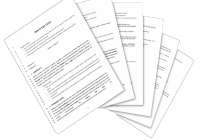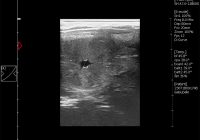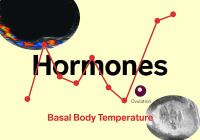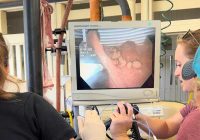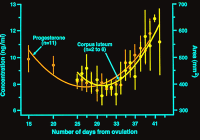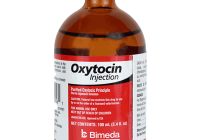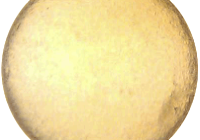The Effect of Uterine Interference on Reproductive Function in the Mare An unpublished manuscript written in 1976 by John R Newcombe and W E Allen, Royal Veterinary College University of London Introduction It has been shown in several recent reports that irrigation or infusion of the uterine lumen of the mare during the luteal phase of the oestrous… Read More »
Repeated Embryo Loss in Mares is the Result of Retarded, Small for Age, Embryonic Vesicles. By Professor John Newcombe, BVetMed, MRCVS A Normal Foetus and then a Foal Will Eventually Result When a Normal Embryo is Produced: A Case Report ABSTRACT A twelve-year-old maiden/barren part-TB mare with otherwise limited reproductive history, was sent to an equine fertility clinic… Read More »
The last completed cycle (IOI) of the year before a phase of extended winter anoestrus is significantly longer than the midsummer IOI in each mare By Professor John Newcombe, BVetMed, MRCVS Abstract Data held at a Clinic at latitude 52°N was examined retrospectively to determine the length of the last Inter-ovulatory Interval (“IOI” – “cycle”) preceding a period… Read More »
Can Mare Temperature Changes Predict Ovulation? Temperature changes to predict ovulation are used in multiple species, including humans. The question has been asked of the mare in the past, Bowman et al. identifying a drop in temperature using a temperature-reporting microchip following ovulation which occurred in the period from midnight to 9:00 am. Diurnal fluctuations were also observed,… Read More »
Is it Possible to Cause Earlier Regression of the Endometrial Cups to Permit a Return to Breedable Estrus in the Mare? Unique to the early equine pregnancy is the invasive trophoblast of the chorionic girdle and its formation of the endometrial cup cells which secrete equine chorionic gonadotropin (eCG). This invasion occurs between days 35–38 after ovulation. The… Read More »
Is it True Altrenogest Has an Effect on Progesterone Production? Pregnant and embryo recipient mares are often treated with supplemental progestins – commonly Altrenogest in the oral form Regumate, or injectable in one of several longer-acting commercial preparations – in an expectation of “low progesterone” levels. There is a significant question as to what number should be applied… Read More »
Does Routine Monitoring for EVA Make a Difference? With the announcement this week of an outbreak of equine viral arteritis in PEI in Canada, a very reasonable question to ask is “does routine monitoring for EVA make a difference?” At the recent ISER meeting in Brazil, Kaps et al. reviewed the effects of monitoring and management practices on… Read More »
Oxytocin Use to Support Pregnancy Instead of Regumate (Altrenogest)? It seems initially counter-intuitive to consider oxytocin use to support pregnancy instead of Regumate or other altrenogest treatments which are commonly used to potentially increase – or at least maintain – progestin levels during early pregnancy in the mare. Oxytocin causes uterine contractions and will expel the pregnancy, right?… Read More »
Endometrial Biopsy in the Mare – is one sample enough? An endometrial biopsy in the mare is a useful diagnostic to determine cellular health of the uterine lining which will be directly responsible for pregnancy maintenance once placentation has occurred. The biopsy score is correlated to the likelihood of live foal production by use of different scales, such… Read More »
Improve Pregnancy Rates in Older Subfertile Mares! How can one improve pregnancy rates in older subfertile mares? This category of mare is notorious for having lower pregnancy rates, and this becomes even more annoying when one is performing a higher-cost procedure such as embryo transfer. A perennial question therefore is “can we improve pregnancy rates in those older… Read More »

